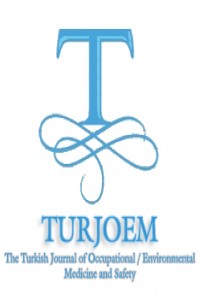Abstract
Metals are
divided into two groups including essential and nonessential, play important roles
in biological processes. Changes in metal ion homeostasis can lead to oxidative
stress. This instance provides information that gene polymorphisms of enzymes
and proteins involved in metal toxicokinetics causes possibly symptomatic
effects for numerous diseases including cancer due to playing an important role
in metal ion homeostasis. Therefore, there is an important relationship between
metal-induced genotoxicity and oxidative stress. Several metals like arsenic
(As), cobalt (Co), chromium (Cr), lead (Pb) and copper (Cu) induce redox
reactions and the production of reactive oxygen species (ROS). For example, as
which is one of the metals with an interest in sulfhydryl groups has a
prooxidative effect. As inhibit antioxidative enzymes leads to depletion of
intracellular glutathione. In addition, as inhibits the biological activity and
great numbers of protein metabolism such as cysteine and metallothionein. Co
increases the toxic oxygen radicals by influencing the metabolism of free
radicals and causes changes in the catabolic defense enzymes activity. As a result of this, it disrupts the balance
of antioxidant. After entering the pulmonary absorption, the reduction of Cr
(VI) to Cr(III) may reveal ROS which can lead to DNA damage and oxidative
stress. As for lead, it induces damage not only production of ROS but also
depletion of the cellular antioxidant pool. Similarly, exposure to copper at
high levels decreases glutathione levels. The aim of this review is to provide
an overview of metal metabolism related to oxidative stress.
References
- Yasemin KARTAL, Esra BALCIOĞLU, Zeliha KAYAALTI
- Department of Physiology, Hacettepe University, Faculty of Medicine, Turkey Institute of Forensic Sciences, Ankara University, Turkey
Abstract
References
- Yasemin KARTAL, Esra BALCIOĞLU, Zeliha KAYAALTI
- Department of Physiology, Hacettepe University, Faculty of Medicine, Turkey Institute of Forensic Sciences, Ankara University, Turkey
Details
| Journal Section | Articles |
|---|---|
| Authors | |
| Publication Date | February 16, 2017 |
| Published in Issue | Year 2017 Volume: Volume 2 Issue: İssue 1 (1) - 2.İnternational Congress Of Forensic Toxicology |


